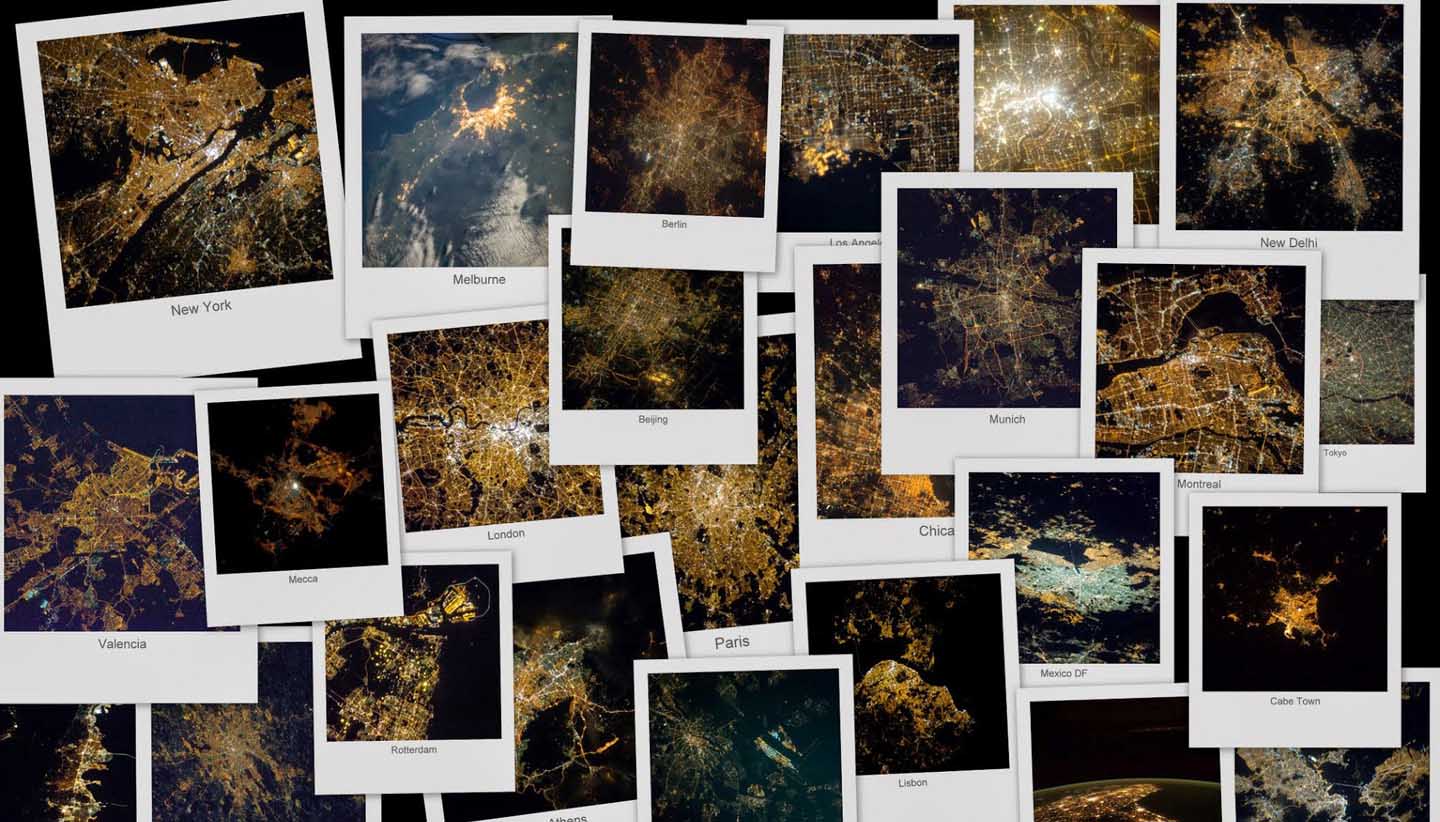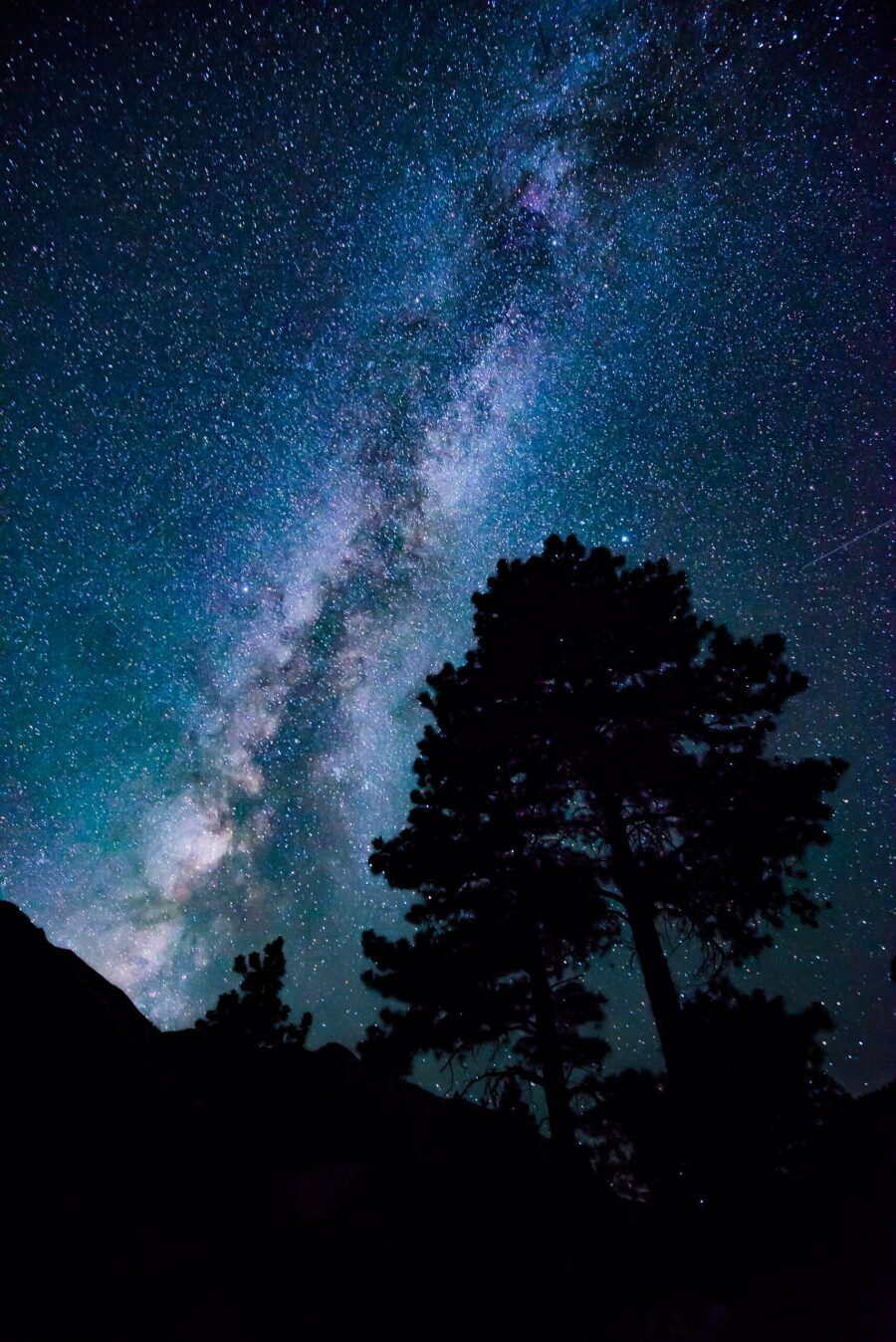
NASA / ESA / Cities at Night
Apart from the weather and summer’s late sunsets, the major challenge of stargazing so close to downtown Portland is the persistent skyglow. Most everything along the horizon and over the tall treetops gets swallowed. Directly above, the sky can look like a dull canvas with a modest scattering of the brightest stars.
There’s been a lot of talk about light pollution in the mainstream media lately, with discussion about its impact on local wildlife, human health, avian migrations, and stargazing.
“In a primal sense,” writes Nadia Drake in National Geographic, “we’ve lost our connection to nighttime skies, the tapestries into which our ancestors wove their star-studded stories, timed the planting and harvesting of crops, and deduced the physical laws governing the cosmos.”
Even The Washington Post ran a recent article about increased light pollution resulting from the adoption of LED streetlights in Washington State’s Chelan County: “One year after the change began, the additional glare masked about half of the previously visible stars.” While we’re using less energy with individual LED bulbs, their economy and longevity lead towns and facilities to use more of them, which only increases the glow. Their light is also typically at bluer wavelengths that scatter more easily. As a result, we’re now seeing roughly 10% more light pollution each year.
We’re losing our night sky views at an alarming rate.
There are designated dark-sky communities, dedicated to reducing light pollution for the good of humans and wildlife alike, so I don’t despair that future generations will lose all access to the stars. But, here and now, it’s downright dispiriting to look up at night and imagine everything I cannot see.

Open Source / Jeff Nissen / IDA
Since I can’t solve light pollution on my own, and because I worry that trying to talk to my neighbors about their extraneous outdoor lighting would bring an unfortunate “get off my lawn” energy, I had the idea that I could begin instead by encouraging others to enjoy the darkness. What if I could show them what they’re missing? I decided to host an informal, mini star party in a local park.
Given Portland’s unpredictable and highly changeable weather in “June-uary,” my post to the neighborhood Facebook group was rather last minute on a clear Sunday night. I explained that any and all were welcome to join but asked that white-light flashlights be left at home.
Other than my partner M and Jax, the super-mellow Danelab, exactly one neighbor joined me in the park. Undaunted, I scouted a patch of grass that was a compromise between being blocked by trees and being overwhelmed by a nearby streetlight. I set up my Dwarf II EAA robotic scope to demonstrate the simple magic of what’s often obscured above our heads.
Even at a dark sky site, not everything the Dwarf II sent to my tablet screen would have been visible to the naked eye. We looked at live-stacked images of Antares and M4, the Sombrero Galaxy, and the Ring Nebula. A bonus for me that night was seeing the Dumbbell Nebula for the first time.
Nancy, the single neighbor in attendance, was instantly amazed and full of questions. Sitting the grass, she asked about the difference between a star cluster and a galaxy, and we talked about what a light year means — by way of what was going on in Ancient Rome around the time the light we see now left the Ring Nebula.
Before I knew it, Nancy openly wished for a BB gun to take out the streetlight so she could see more stars with her own eyes. Getting excited about inviting other neighbors to the park to look up together, she wondered if the city might turn off the streetlight for future mini star parties.
Maybe quarterly or monthly nighttime gatherings will encourage my neighbors to consider their outdoor fixtures or even blackout curtains for hyperlocal impact. Last year, M replaced our catio porch lights with dimmable red LEDs — his way of supporting my nocturnal activities. I’m not sure if this solution is less bright, but it does make our house look like the local portal to hell, which is fun.
In the meantime, unless I make the long drive to a truly dark site like Sunriver in Oregon or Goldendale in Washington, I can only imagine what my ancestors saw when they looked up at night. When I step outside after dark, I envy the ancient storytellers who gazed into deep and rich starfields as they traced their tales in the stars.
I genuinely hope generations to come will have better and clearer views and can reclaim this primal connection, and that even city dwellers can make out both Mizar and Alcor in the handle of the Big Dipper. My wish is that kids will be able to pause their games of nighttime kickball to appreciate the stars overhead, like I did when my grandmother first pointed the way to Orion and Taurus.
For now, I console myself that the stars are still there, whether I can see them or not. Light pollution isn’t something I can wait out like overcast weather, but I trust it’s something we can work together to overcome.
 3
3









Comments
Anthony Barreiro
July 4, 2023 at 4:03 pm
Thank you Jennifer! I believe this kind of one-on-one outreach and education can make a real difference. As the good book says, it is better to turn off a single streetlight than to curse the light pollution. I've talked to all my neighbors about my skywatching habit and asked them to turn off their outside lights when they're not using them. They've been understanding and supportive. And I've shared views of the Moon, planets, star clusters, and double stars with neighbors and passersby. My little refractor can't show galaxies or nebulas through urban light pollution.
You must be logged in to post a comment.
Jen Willis
July 7, 2023 at 12:08 am
It's amazing what a profound impact we can have on each other. My neighbor has asked if we can have monthly mini star parties in the park now, as weather and other factors permit.
You must be logged in to post a comment.
Revv
July 12, 2023 at 11:07 am
How much of an area needs to be dark for the night sky to be reasonably dark? And is light pollution really the main obstruction for dark skies? I have seen citywide power cuts and observed absolutely no change in the darkness of the skies multiple times. And even the weather was clear. Makes me wonder if there is something more to it than just lights.
You must be logged in to post a comment.
You must be logged in to post a comment.